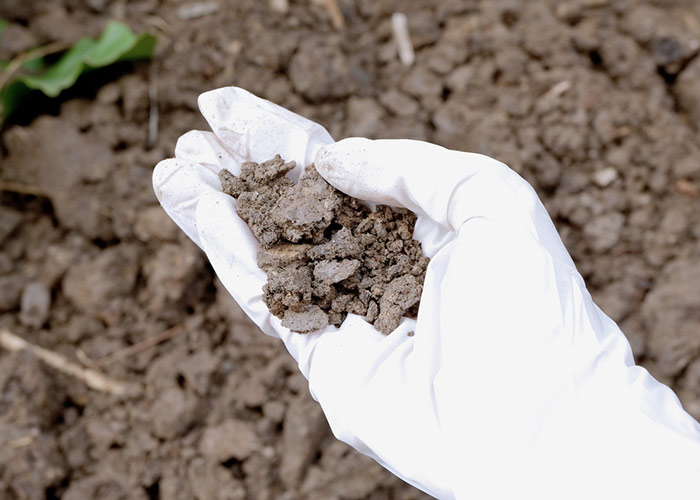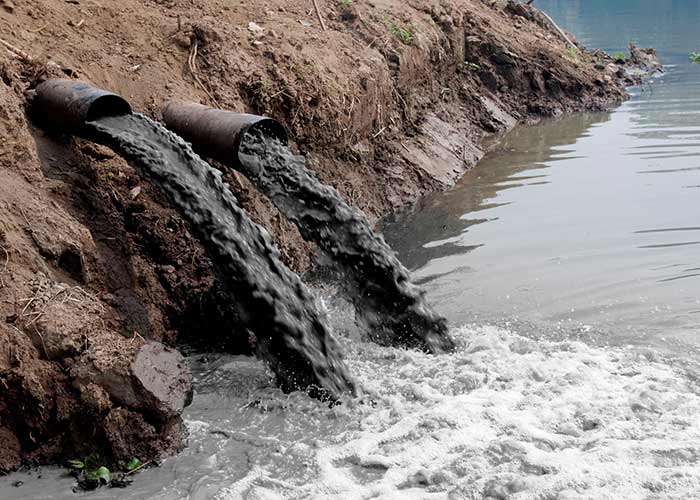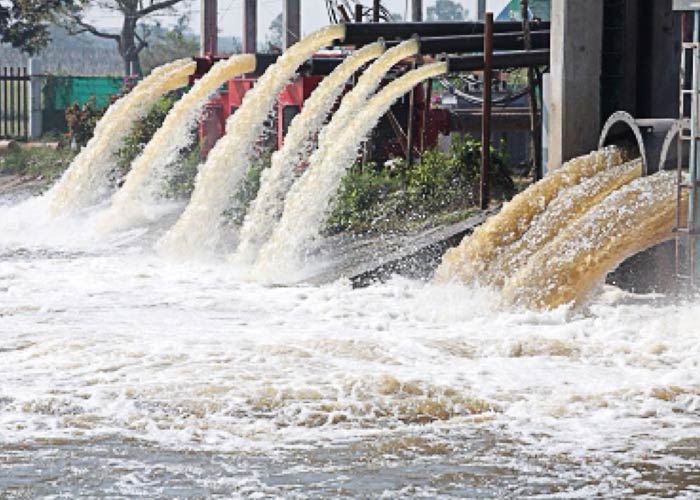The topmost part of the Earth’s surface is called soil. The soil is formed from inorganic factors such as water and heat on the surface of the earth and biological constituents such as plants and micro-organisms.
Nearly 1/4 of the Earth’s surface is land, but at present half of its population is not suitable for human habitation due to being in the form of polar regions, desert sites and mountains. Although man has gained the ability to transform the structure of the land, but it is possible only on a small scale. Converting dry terrains such as Sahara and Gobi and North Africa into habitable or fertile land is still beyond human power.
There are habitats of innumerable micro-organisms in the soil, which, according to their ability, reduce the prevailing pollution and increase the fertility of the soil by activating decomposition of all the wastes involved in the soil. But due to increasing effect of water pollution and air pollution, soil pollution is also spreading fast. Due to soil pollution, soil fertility becomes very weak; sometimes soil becomes dead, which can also be called barren land.
Factors responsible for Outbreak of Diseases
- The use of excessive amount of chemical fertilizers and pesticides to increase agricultural production and accumulation of various types of wastes has given birth to soil pollution.
- In order to increase the yield of crops, different types of fertilizers are added in the field.
- These compounds are made of various chemical substances, which contaminate the soil.
- These fertilizers enhance the production of crops, but they also contain the toxic substances which enter the human body through fruits and vegetables, and badly affect human health.
- Due to which groundwater becomes polluted and the biological property of the soil is also depleted.
- Also, food produced from such soil is not beneficial for health.
- Apart from this, the use of water polluted by industrial waste and synthetic organic chemicals in industrial areas for irrigation in the fields and gardens causes chemical pollution of the soil.
- To make matters worse, there is an added problem of soil erosion due to large-scale deforestation.
Impact of Soil Pollution on Human/Animal Health
Pollution is spread in the soil due to the spread of solid wastes and leakage of chemical substances. The presence of unwanted man-made materials in the soil, mainly comprising insecticides, petroleum hydrocarbons, polycyclic aromatic hydrocarbons (PAHs) and heavy metals, is critically harmful to human health and other life forms. Hundreds of animals and birds are being killed every year due to eating contaminated food and polyethylene, etc.
The unscientific use of chemical fertilizers and pesticides causes huge damage to the environment. This also increases the risk of diseases in animals and the risk of cancer in men by more than six times.
Excessive use of synthetic fertilizers has resulted in a lot of harm to the environment and affected human life. Due to the decline in the quality of soil from the use of chemical fertilizers, the production of crops also decreases. All this leads to adverse effects on the health of humans as well as animals.
Diseases due to Soil Pollution (Land pollution)
The lethal effect of chemicals in the soil affects human health. Burning polyethylene waste releases toxic gases such as carbon dioxide, carbon monoxide and dioxins. Thereby, it increases the risk of respiratory, skin, stomach diseases etc.
In general, any chemicals placed at construction sites can pollute the soil. However, there is a high risk of chemicals such as PAHs that can be easily transferred by air (in the form of microorganisms). In addition, the dust of the construction site can easily spread all over the air and it is dangerous due to the microscopic particles (less than 10 microns). These types of construction dust can also produce swine-related diseases, asthma, bronchitis and even cancer.
The indiscriminate use of chemical fertilizers pollutes the soil and adversely affects its physical, chemical and biological properties. For example, due to continuous use of ammonium sulphate, while ammonia is used by the crop, sulphate ions gradually increase in soil which makes the soil acidic. Similarly, the same is the result with continuous use of sodium nitrate and potassium nitrate. The nitrate element is absorbed by the crop and the amount of sodium and potassium keeps growing in the soil.
As a result, soil structure has to bear adverse effects. Not only this, the plants are able to use only a fraction of the nitrate elements of fertilizers, and a large portion of these elements keeps on collecting in the soil, which increases the concentration of nitrate ions in the underground water by moving into the earth with rain water. The use of this water increases the likelihood of disease called ‘methemoglobinemia’ or ‘blue-baby disease’ in newborns (In methemoglobinemia, an abnormal amount of methemoglobin (a form of haemoglobin ) is produced with the result that it can carry oxygen, but is unable to release it effectively to body tissues). According to research, these nitrate ions may also cause disease like cancer.
The Health Research Department has stated in its report that fertilizers contain heavy metals, including silver, nickel, selenium, thallium, vanadium, mercury, lead, cadmium and uranium, which are directly pose dangers to human health. They lead to many types of diseases of kidney, lungs and liver. Due to fertilizers, the risk of brain cancer, prostate cancer, colon cancer, lymphoma and white blood cell deficiency increases more than six times.
The production of synthetic organic chemicals worldwide has been quadrupled in the last decade. According to a recent estimate, more than 40 lakh chemicals have been isolated or synthesized from natural materials. More than 60,000 of these chemicals are used in our daily life – approximately 1500 chemicals are used as active ingredients in insecticides, in the form of 4000 drugs and semi-drugs and 5,500 food additives.
The remaining 49,000 classification can be broadly done in the form of consumer products such as industrial and agricultural chemicals, fuel and lacquers, cement, beauty toiletries, plastic and fibre. Some or all of these chemicals take the form of air, water and soil pollutants in our work and residential environment. The entire environment becomes a ‘junk basket’ for chemicals left during production and use. If this process of chemical pollution continues uninterrupted then the very existence of life will be at stake.
Nitrous oxide gas is formed by the use of chemical fertilizers. It is a powerful greenhouse gas, which increases the temperature. Fertilizers account for 77 percent of total direct nitrous oxide from agricultural soil. Due to the excessive use of nitrogen fertilizers, the problem of pollution in ground water has also increased.
Ban on Insecticides by EU
In order to save bees, the European Union (EU) recently banned insecticides made from chemicals called neonicatinoid for two years. Some countries like Germany, France, and Italy have already banned neonicotenoids. The EU says that when the bees take juice from flowers affected by the spraying of these pesticides, they come in contact with them, thereby causing them many kinds of diseases, which lead to their deaths.
Diseases caused by Soil Pollution in India
The agricultural states of Punjab and Haryana provide the latest example of the mindless use of chemical fertilizers. According to statistics of the year 2013-14, the ratio of the use of nitrogen, phosphorus and potash in Punjab was 56.8, 13.5 and one, respectively whereas in Haryana it was 64, 12.8 and one whereas the scientific ratio is 4: 2: 1. In the soil of different parts of the country, there is a shortage of 89% nitrogen, 80% phosphorus, 50% potassium, 41% sulphur, 49% zinc and 33% boron.
The ratio of grain production and fertilizer consumption in Punjab, which is the most chemical consuming state in the country, has gone awry. Between 1992 and 2003, there was a decline in cereal production in Punjab. The quality of fertile soil of Punjab is being eroded on a large scale, threatens stagnation in Punjab’s agriculture. A survey conducted by Greenpeace in the ‘live soil campaign’ conducted in Punjab in 2010, revealed that the use of chemicals in Punjab has increased alarmingly. In the last forty years, the use of urea alone has increased by 750% in Bhatinda. The survey also revealed that the farmers are aware of the loss due to chemicals, but they have no choice.
Rising Incidence of Cancer
Farmers are suffering from cancer in large numbers in the districts of Bhatinda, Faridkot, Moga, Muktsar, Ferozepur, Sangrur and Mansa districts of Punjab. Studies conducted by the Government, including the PGI and Punjab University located in the Science and Environment Centre, Chandigarh, have revealed that due to the excessive use of pesticides, the spread of cancer in these districts has reached alarming levels. The Punjab government has now banned insecticides that have been proved dangerous within the province.
Poisonous groundwater
To save the crops from diseases, very small part of the pesticide used, serves its real purpose. A large part of it reaches our various water sources and pollutes the ground water. Due to the release of these chemicals in the ground, the ground water of many places has become extremely poisonous. Not only this, these chemicals later also flow into rivers, ponds, which are also affecting aquatic creatures, animals and birds.
Today there are no food items left untouched by the effects of pesticides. Food, vegetables, milk, canned materials, cold drinks contain insecticides in every material. Research has shown that people who use such items today have become more prone to cancer. Meat and fish are also not untouched from the effect of pesticides.
Chemicals are also found in the fodder we are feeding animals today. That is, whosoever will eat the meat of those animals will suffer from ill-health. Animals like cow, buffalo, sheep, goat etc. are becoming poisonous. In research, it has also been found that the mother’s milk has also been affected by the presence of pesticides in the body. Soil is fast deteriorating due to the use of chemical fertilizers. Due to soil pollution, harmful ingredients are reaching crops. As a result, the soil quality is rapidly declining.
More on Soil Pollution







